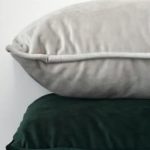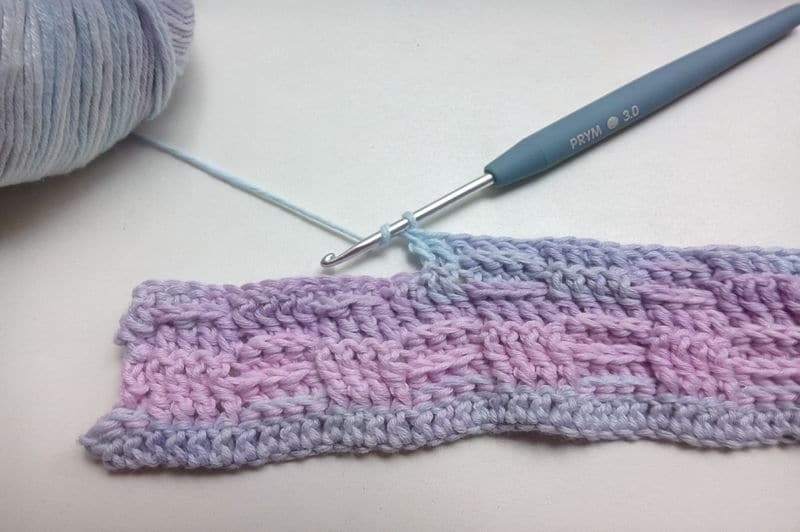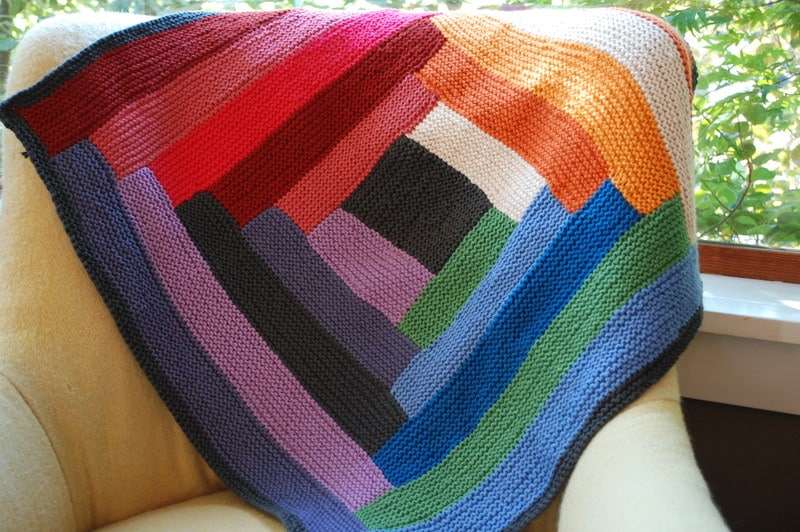It only takes three steps to learn how to make a fleece quillow combo blanket pillow, even without much sewing experience. You will only need two yards each of flannel and fleece for this project, and your quillow will be ready in no time. But while you can hand-sew the project, it will be more convenient to use a sewing machine because of its size.

This project is essentially a cosier form of the quillow, a blanket that can turn into a pillow. You used fleece and flannel to make the blanket and pillow feel more luxurious. And if you’re new to this innovative product, here is how a quillow folds into a pillow.
How To Sew A Fleece Quillow Combo Blanket Pillow
Step 1. Prepare your fleece and flannel
To make a quillow, you will need two yards each for your chosen flannel and fleece fabrics. It’s best to have a solid colour for the fleece and a printed fabric for the flannel. Once you have these materials, cut off the selvedge edges to prevent fraying.
Cut lengthwise strips from your flannel and fleece fabrics around 16 inches long. Then, cut two squares to make the quillow’s packet. What you left with are two fabric pieces measuring 56 inches long and around 40 inches wide to make the rest of the combo blanket pillow.
Step 2. Sew the pillow pocket and make the quilt
Make the pillow pocket by placing the two squares with their right sides together. Sew all around except for the opening side, making sure you’re also using a ¼-inch seam allowance. You don’t have to topstitch the pocket, but remember to turn and sew the opening close.
You’ll also place the fleece and flannel fabric pieces with their right sides together for the quilt. Use the same 1/4 -inch seam allowance and sew all around, except for one side to turn. Then, topstitch the quilt to finish it, and you’re ready to construct the quillow in the final step.
Step 3. Finish the fleece quillow combo blanket pillow
Place the pillow pocket you made earlier in the bottom flannel and check if it’s centred. Then, leave one side open and sew all the other sides to secure the pocket in place. While it’s self-explanatory, please keep in mind that the pocket side is the one closest to the centre, and you must never sew it shut.
Your fleece quillow now finished, and what’s left is folding it to turn the blanket into a pillow. To do this, place the flannel side down and fold one side over. Repeat on the other side to the top and fold down to reach the pillow pocket.
After three folds, the blanket should be inside the pocket. You only need to grab its interior to turn the blanket inside out. Once you have the pillow, fluff it a bit, and it’s ready to use.
How Many Yards Of Fabric Do I Need For A Quillow?
The amount of fabric to make a quillow will depend on the user. Typically, you will need two yards for each fabric piece to create a quillow for an adult. It’s also better to allocate at least half a yard of allowance.
For smaller quillows that are the size of a baby blanket, you will need one and a half yards for each fabric. This yardage is enough to produce a 36 by 44-inch crib baby blanket with the remaining material for the pillow. To get better at estimating, check our guide on how many yards of fabric to make a blanket.
What fabric to use for making a quillow
Fleece and flannel materials are best for a quillow combo because they feel cosy and warm. However, any soft and comfortable fabric should work, especially if you want to use the quillow for a baby. For example, cotton fabric is excellent since it’s breathable and non-irritating.
You also want to use materials that are easy to maintain if you bring the quillow frequently for travel. Some people in the UK opt for vinyl on one side to make the quillow sturdy and waterproof for picnics. This way, it’s easier to wash off the dirt on the quillow.
What Size Is A Quillow?
A quillow blanket has no standard size because the resulting dimensions depend on the material yardage you want to use. Some fleece blanket pillows are 40 to 42 inches wide and 56 inches long. Just remember to use enough fabric to cover the person who will use it.
How Do You Make A Fleece Blanket Quilt?
Did you know that tying or braiding a fleece blanket is not the only easy technique you can do to make one? You can also sew several fleece squares to make a fleece blanket quilt. Just start with the pattern you want to create by arranging the fleece squares on the surface.
- Take two squares and place them on top of each other with their edges aligned
- Sew around the fleece with your preferred seam allowance
- Sew all the other squares to finish the row and repeat until you finish several rows according to your desired quilt size
- Sew the rows together using their seam allowance
Conclusion
Fleece makes a perfect blanket, but it can also be a cosy pillow. A quick recap on this guide for how to make a fleece quillow combo blanket pillow is to prepare two fabric pieces to make the blanket and pillow pocket. Sew the pocket onto the blanket, and you got yourself a quillow.
Fleece and flannel are perfect for this project, and you only need three folds to turn it into a pillow. So what are you waiting for? Make yourself a two-in-one quillow ASAP!









